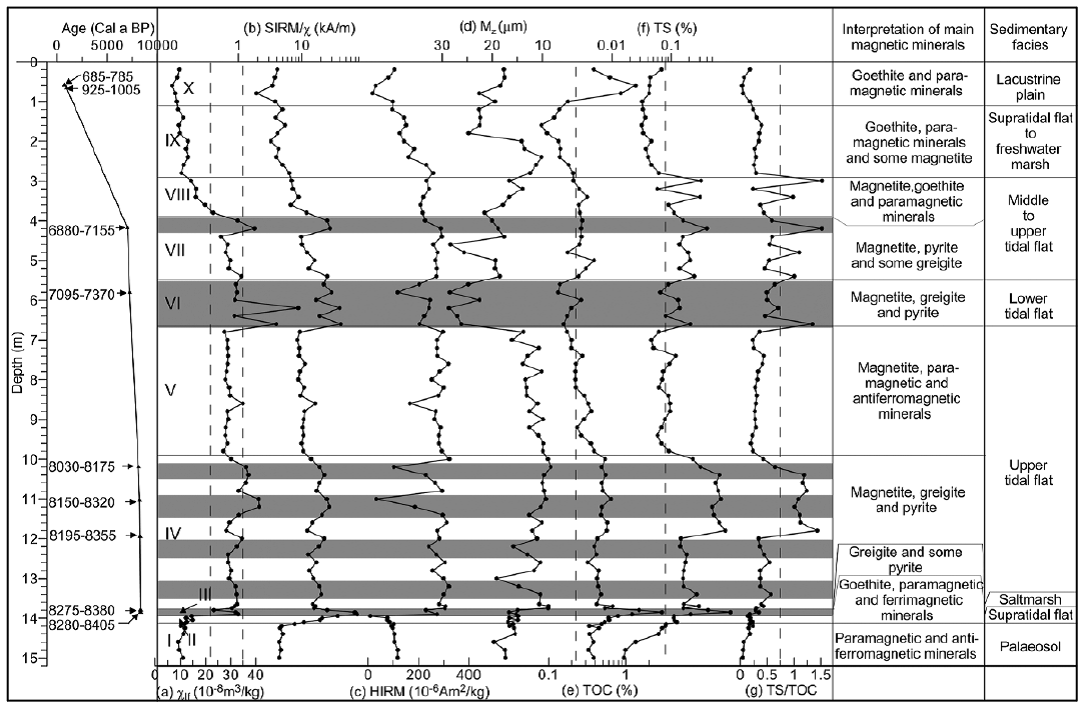Magnetic properties of tidal flat sediments on the Yangtze coast, China: Early diagenetic alteration and implications
Measurements of magnetic properties, total organic carbon (TOC) and total sulphur (TS) were performed on recent tidal flat sediments from the Feng-Xian (FX) and Bei-Bu-Gang (BBG) areas of the Yangtze coast and on Holocene tidal flat sediments from core SL67 from the southern Yangtze delta plain,China. The results indicate that greigite has likely formed in the recent upper and middle tidal flat sediments of cores FX and BBG, which are enriched in TOC and TS. Greigite is also present in association with pyrite in the early to middle Holocene saltmarsh and tidal flat sediments of SL67. The abundance of greigite in the early Holocene basal saltmarsh sediments of core SL67, along with the extremely low values of TS/TOC, suggest the presence of either a limited sulphate supply from seawater or a major terrestrial source of organic matter that decomposed slowly. The presence of greigite in mid-Holocene lower tidal flat sediments that contained low amounts of TOC indicates an upward diffusion of CH4 and H2S from the underlying upper tidal flat sediments. A comparison between the sediments of core SL67 and those of the modern tidal flat suggests that early diagenesis (including selective dissolution and pyritisation) continued after the sediments were buried during the Holocene, resulting in the depletion of soil-derived superparamagnetic (SP) particles and the enhanced magnetic properties because of authigenic greigite. However, antiferromagnetic magnetic minerals have not been altered by early diagenesis. Thus, magnetic parameter hard isothermal remanent magnetisation (HIRM) which preserved the primary magnetic signals reflects fluctuations in the detrital mineral input to the core site and records a two-stage 8.2 ka cooling event.

Composite records of core SL67, including AMS 14C ages, representative magnetic parameters, grain sizes, geochemical results,interpretations of magnetic minerals and sedimentary environments. (a) χlf, (b) SIRM/χ, (c) HIRM, (d) Mz, (e) TOC (after Wang et al., 2013), (f) TS (after Wang et al., 2013) and (g) TS/TOC. Grey shaded parts indicate occurrence of greigite. Paramagnetic minerals represent only the ironbearing silicate and clay minerals.
List of relate results:
-
古地理学报 ,
2015 ,
17(3)
: 263-274
-
海洋学报 ,
2015 ,
37(5)
: 101-111
-
The Holocene ,
2015 ,
25(5)
: 832-843.
